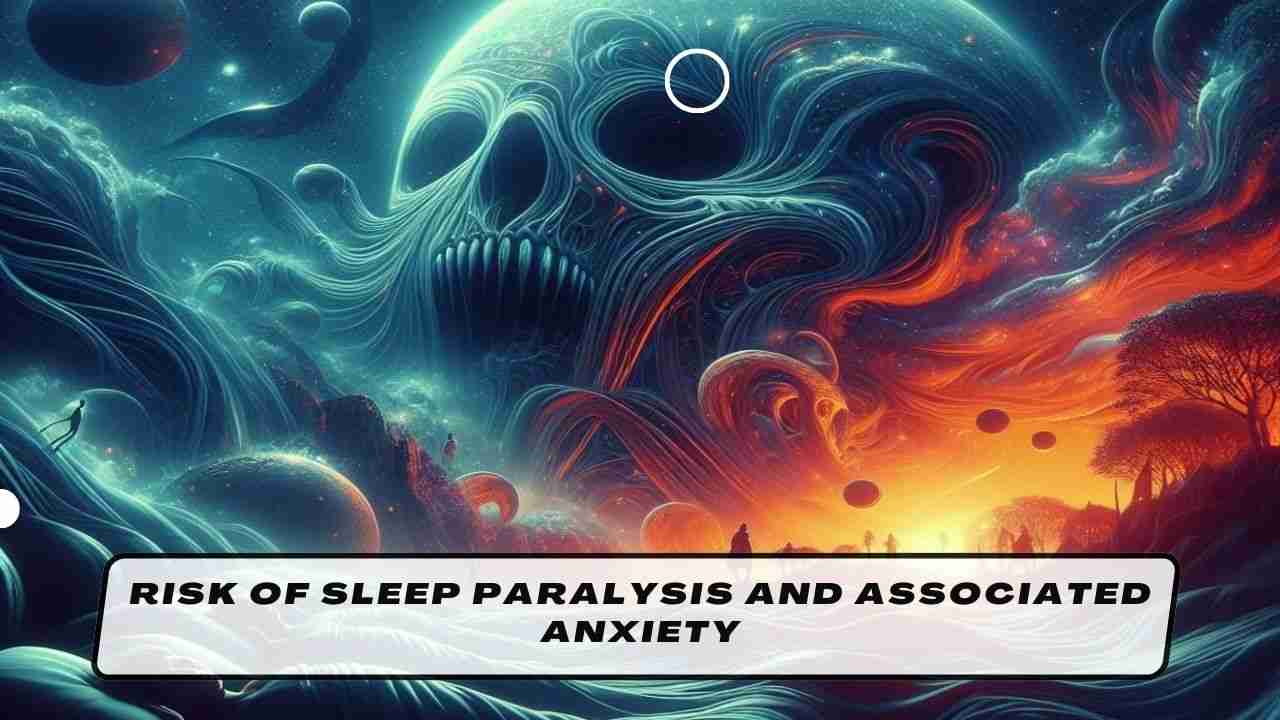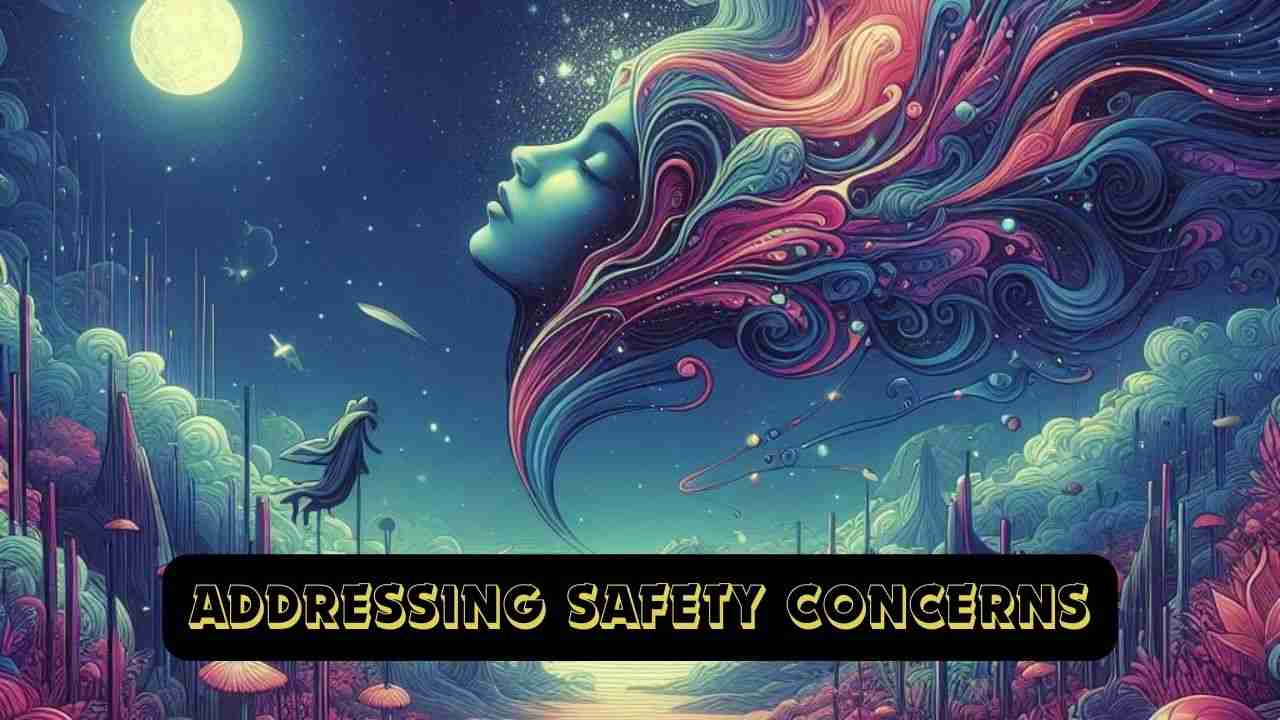Lucid dreaming, the remarkable ability to be aware and in control of our dreams, has captured the interest of many due to its potential benefits. While it offers exciting possibilities for creativity, problem-solving, and personal growth, questions arise about its safety.
In this article, we’ll delve into the world of lucid dreaming, exploring its perks and potential risks to help you navigate this fascinating phenomenon responsibly.
Contents Inside
ToggleExploring Lucid Dreaming
Lucid dreaming is when you’re dreaming, but you realize that you’re dreaming while it’s happening. It’s like being awake in your dream world. Normally, when we dream, we just go along with whatever is happening in the dream without realizing it’s not real. But in a lucid dream, you know it’s all in your mind.
Scientists have studied lucid dreaming and found that our brains act differently during these dreams. It’s like our brains are in a special mode, where we’re partly asleep but also partly awake. People use different techniques to try to have lucid dreams, like keeping a dream journal or doing reality checks throughout the day to see if they’re dreaming or awake.
Lucid dreaming can feel really cool because you can control what happens in your dream. You can fly, visit far-off places, or even talk to imaginary characters. It’s like having your own personal virtual reality experience while you sleep.
Potential Benefits of Lucid Dreaming
Lucid dreaming isn’t just fun it can also have some cool benefits:

Creative Problem-Solving and Inspiration
When you’re aware you’re dreaming, you can explore different ideas and scenarios. Some people find that they come up with creative solutions to problems or get inspired for art, writing, or other projects.
Overcoming Fears and Phobias
In a lucid dream, you’re in control, which means you can face your fears in a safe environment. It’s like practicing in your mind before facing them in real life.
Enhancing Self-Awareness and Personal Growth
Lucid dreaming can help you learn more about yourself. You might discover patterns in your dreams or uncover hidden desires and fears. This self-awareness can lead to personal growth and development.
Therapeutic Potential for Nightmares and Trauma
For some people, nightmares are a real problem. Lucid dreaming techniques can help them take control of their dreams and change scary situations into more positive ones. It can also be a tool for therapists to help people deal with past traumas in a safe way.
These benefits show that lucid dreaming isn’t just about having fun it can also be a tool for personal development and healing.
Also Read: How to Stop Lucid Dreaming?
Exploring the Risks of Lucid Dreaming
While lucid dreaming can be exciting and beneficial, it’s essential to be aware of potential risks:
Lucid Dreaming Disrupts Sleep
Lucid dreaming, the state where individuals are aware they’re dreaming and can often control the content of their dreams, has gained attention for its potential benefits. However, one significant concern surrounding lucid dreaming is its potential to disrupt sleep patterns.
During lucid dreaming, individuals may become so engrossed in their dreams that they experience disturbances in their sleep cycle. This can result in fragmented sleep, where periods of lucid dreaming interrupt the natural progression of sleep stages, including deep, restorative sleep. As a consequence, individuals may wake up feeling fatigued and unrested, despite spending an adequate amount of time in bed.
Moreover, the excitement and stimulation associated with lucid dreaming can lead to difficulty falling asleep or staying asleep throughout the night. Individuals may find themselves spending excessive amounts of time awake during the night, attempting to induce lucid dreams or reflecting on their dream experiences.
The disruption of sleep caused by lucid dreaming can have detrimental effects on overall health and well-being. Chronic sleep disturbances have been linked to a range of health issues, including increased risk of cardiovascular disease, obesity, and impaired cognitive function.
To mitigate the negative impact of lucid dreaming on sleep, individuals can adopt strategies to promote healthy sleep hygiene. Establishing a consistent sleep schedule, creating a relaxing bedtime routine, and limiting exposure to stimulating activities before bed can help improve sleep quality and reduce the likelihood of lucid dreaming disturbances.
While lucid dreaming can offer exciting opportunities for exploration and self-discovery, it is essential to prioritize the maintenance of healthy sleep patterns to ensure optimal physical and mental health. By striking a balance between lucid dreaming and restful sleep, individuals can harness the benefits of both experiences while minimizing potential disruptions to their sleep cycle.
Confusion Between Dream and Reality
In some cases, people who frequently practice lucid dreaming may struggle to distinguish between dream and reality. This confusion can affect their daily life and relationships if they have trouble separating what happened in a dream from what actually occurred.
Read more about Is Lucid Dreaming Halal or Haram?
Lucid Dreaming Could Cause Mental Health Issues
Lucid dreaming, the phenomenon where individuals are aware they are dreaming and can sometimes control their dreams, has garnered significant interest in recent years. While many view lucid dreaming as an exciting and beneficial practice, there is growing concern about its potential impact on mental health.
Research and anecdotal evidence suggest that lucid dreaming could potentially exacerbate certain mental health issues. For example, individuals with anxiety disorders may experience heightened anxiety levels due to the vivid and sometimes unpredictable nature of lucid dreams. Moreover, confusion between dreams and reality can lead to distress and disorientation, particularly for those with conditions like schizophrenia or dissociative disorders.
While some experts argue that lucid dreaming can be a therapeutic tool when used appropriately, caution is warranted. It is essential for individuals considering lucid dreaming to be mindful of their mental health status and to approach the practice with care. Seeking guidance from mental health professionals and practicing lucid dreaming techniques responsibly can help mitigate potential risks and ensure a positive experience.
In conclusion, while lucid dreaming offers intriguing possibilities for self-discovery and exploration, it is crucial to recognize its potential impact on mental health. By acknowledging these risks and taking appropriate precautions, individuals can make informed decisions about engaging in lucid dreaming practices while prioritizing their mental well-being.
Risk of Sleep Paralysis and Associated Anxiety
Lucid dreaming can sometimes lead to experiences of sleep paralysis, where a person is temporarily unable to move or speak upon waking up. This phenomenon, combined with vivid dream imagery, can be frightening and cause anxiety in some individuals.

Lucid Dreaming Can Cause Physical Reactions
Lucid dreaming, a state where individuals are aware they’re dreaming and can often control the content of their dreams, is known to have various effects on the body, including physical reactions. These reactions can manifest in different ways and vary from person to person.
One common physical reaction experienced during lucid dreaming is increased heart rate. As individuals become more engaged and immersed in their lucid dreams, their heart rate may elevate, mimicking the physiological responses associated with excitement or stress. This heightened heart rate can sometimes be accompanied by sweating or changes in breathing patterns.
Muscle twitches or movements are another physical reaction that can occur during lucid dreaming. As individuals actively participate in their dream scenarios, they may experience involuntary muscle contractions or movements in response to the actions or sensations perceived in the dream environment. These movements can range from subtle twitches to more pronounced gestures or motions.
Some individuals may also experience changes in body temperature during lucid dreaming. While the exact mechanism behind these temperature fluctuations is not fully understood, it is believed that the intense mental activity and engagement associated with lucid dreaming can influence the body’s thermoregulatory processes, leading to sensations of warmth or coldness.
Additionally, individuals may report experiencing sensations of tingling or numbness in certain parts of their body during lucid dreaming. These sensations can occur as a result of altered sensory perception within the dream state, where individuals may perceive tactile sensations that are not present in the physical environment.
While these physical reactions are generally harmless and transient, individuals who experience discomfort or distress during lucid dreaming should consider adjusting their lucid dreaming practices or seeking guidance from healthcare professionals. Overall, understanding the potential for physical reactions during lucid dreaming can enhance the awareness and enjoyment of this unique experience.
Awareness of these risks is important for anyone considering or practicing lucid dreaming. It’s essential to approach lucid dreaming with caution and moderation, especially for those with underlying mental health concerns. If you experience any negative effects or concerns, it’s advisable to seek guidance from a healthcare professional.
Addressing Safety Concerns
To enjoy the benefits of lucid dreaming while minimizing potential risks, consider the following safety tips:

Maintain a Healthy Sleep Schedule
Prioritize regular sleep patterns and ensure you’re getting enough restful sleep each night. Avoid sacrificing sleep quality for lucid dreaming practices, as sleep deprivation can lead to various health issues.
Practice Moderation
While lucid dreaming can be fascinating, avoid excessive or obsessive practices. Balance lucid dreaming with other activities and responsibilities in your life to maintain overall well-being.
Learn Relaxation Techniques
Incorporate relaxation techniques such as meditation or deep breathing exercises into your routine to promote better sleep and reduce stress levels. A calm mind and body can enhance the quality of your lucid dreaming experiences.
Seek Professional Guidance if Needed
If you have underlying mental health conditions or concerns, consult with a healthcare professional before engaging in lucid dreaming practices. They can provide personalized guidance and ensure that lucid dreaming is safe for you.
Stay Grounded in Reality
Remind yourself regularly of the difference between dreams and reality. Engage in activities that keep you grounded, such as spending time with loved ones, pursuing hobbies, and maintaining a healthy lifestyle outside of lucid dreaming.
By following these safety measures and being mindful of your well-being, you can enjoy the benefits of lucid dreaming while minimizing potential risks. Remember that your health and overall happiness should always come first.
Also Read: How to Lucid Dream Fast?
Conclusion
Lucid dreaming offers a fascinating and potentially beneficial experience, allowing individuals to explore their inner worlds and enhance personal growth. While the practice of lucid dreaming can be exciting, it’s essential to approach it with awareness and caution.
By understanding the potential benefits and risks of lucid dreaming, individuals can make informed decisions about incorporating it into their lives. Practicing moderation, maintaining a healthy sleep schedule, and seeking professional guidance when needed can help ensure a safe and enjoyable lucid dreaming experience.
Ultimately, lucid dreaming can be a valuable tool for creativity, self-discovery, and overcoming fears. By integrating safety measures and responsible practices, individuals can harness the power of lucid dreaming to enrich their lives while prioritizing their well-being.
As we continue to explore the fascinating realm of lucid dreaming, let’s remember to prioritize self-care and mindfulness, ensuring that our experiences are both enriching and safe.









